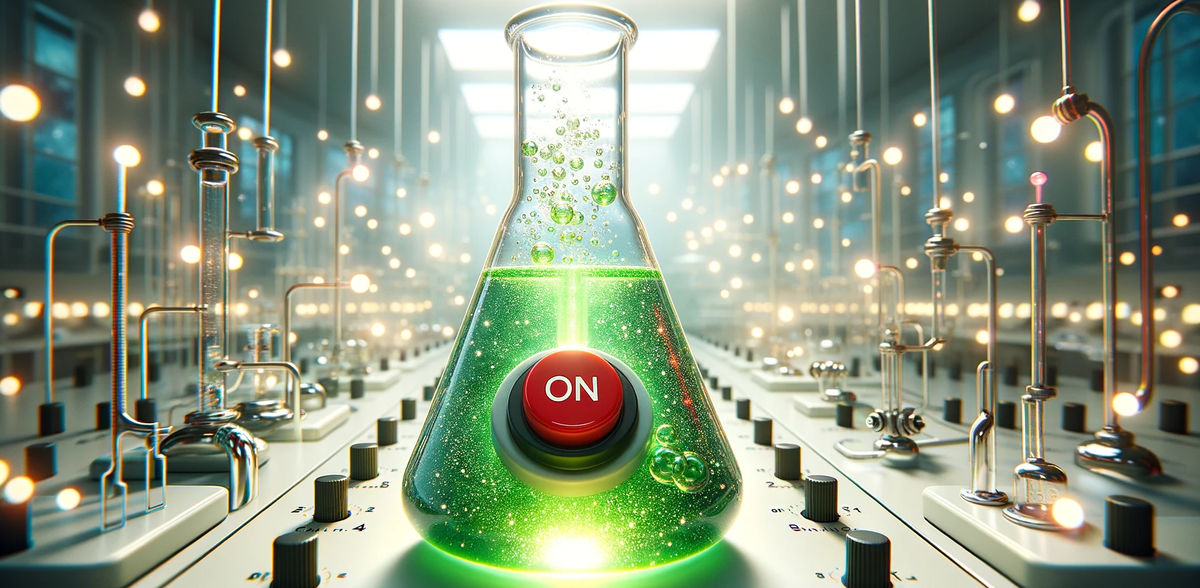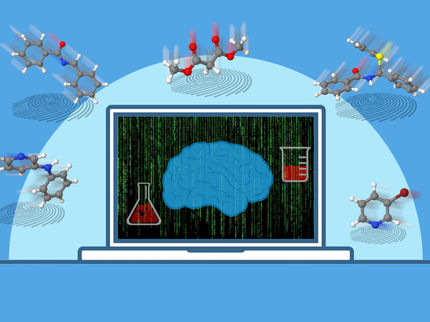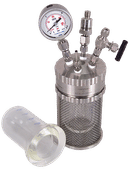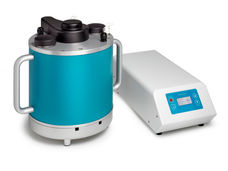A long-awaited breakthrough: An electrical switch to control chemical reactions
An electrical device that makes it easy to activate chemical reactions in a «greener» way
New pharmaceuticals, cleaner fuels, biodegradable plastics: in order to meet society’s needs, chemists have to develop new synthesis methods to obtain new products that do not exist in their natural state. A research group at the University of Geneva (UNIGE), in collaboration with Cardiff University, has discovered how to use an external electric field to control and accelerate a chemical reaction, like a ‘‘switch’’. This work, to be read in Science Advances, could have a considerable impact on the development of new molecules, enabling not only more environmentally friendly synthesis, but also very simple external control of a chemical reaction.
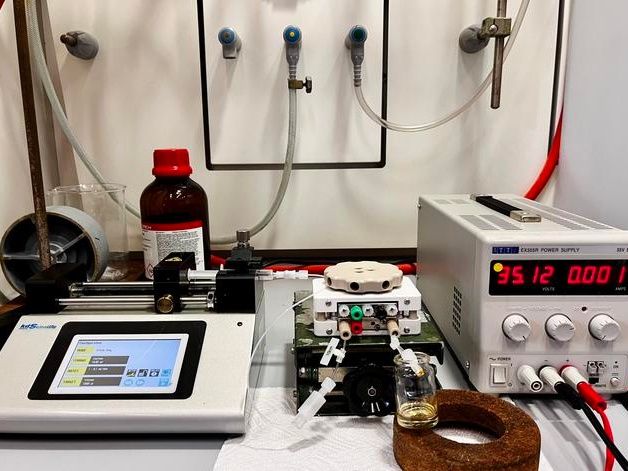
The device takes the form of a small box in which the reaction medium circulates between two electrodes producing the electric field.
© Stefan Matile
In chemistry, creating complex organic chemical compounds from simpler reagents is denoted ‘‘organic synthesis’’. Through successive reactions, chemists assemble small molecules to ultimately form the desired products. Organic synthesis is crucial to the manufacture of drugs, polymers, agrochemicals, pigments and fragrances. These successive steps are extremely precise and delicate to control. To limit the required resources, the yield of each reaction step should be optimal. Achieving better control and simpler operation of these reactions remains a major research challenge.
‘‘Any molecular transformation results from electrons - negatively charged elementary particles - moving from one place in a molecule to another,’’ explains Stefan Matile, full professor in the Department of Organic Chemistry at the UNIGE’s Faculty of Science and part of the National Centre of Competence in Research (NCCR) Molecular Systems Engineering, who led the study. Electrons can be influenced by an external electric field. It is therefore theoretically possible to electrically control chemical reactions. Although simple in principle and promising in terms of impact, this approach has come up against several limitations, and its few implementations have performed poorly.
A long-awaited breakthrough
With their teams, Stefan Matile and his Cardiff University counterpart, professor Thomas Wirth, have succeeded in activating an organic chemical reaction with a simple electric field. To do this, they designed an electrochemical microfluidic reactor. Their results clearly show the dependence between the state of progress of the chemical reaction and the intensity of the applied electric field. This device enables a chemical reaction to be activated simply by flipping a switch.
‘‘This type of reactor takes the form of a small box in which the reaction mixture can circulate between two electrodes producing the electric field. The electrodes are 5 cm x 5 cm square plates placed as close together as possible. They are separated by a quarter-millimetre-thick sheet. This sheet contains the flow channel for circulating the molecules between the electrodes,’’ explains Ángeles Gutiérrez López, PhD student in Stefan Matile’s group and first author of the paper.
The electrodes are coated with carbon nanotubes. As they flow through the reactor, the reactants interact weakly with the carbon nanotubes, exposing them to the electric field. This induces electronic polarization in the molecule, activating the chemical transformation.
Towards greener activation of chemical reactions?
To create the desired chemical bonds with a high yield, chemists usually implement complex, multi-step strategies involving numerous intermediates. These strategies require important resources and energy. The new electrical device proposed by Stefan Matile and Thomas Wirth could simplify these strategies and thus reduce the carbon impact of chemical syntheses.
The device has the advantage of being easy to control. ‘‘Our ‘reactor’ is in some ways like the particle accelerator at CERN in Geneva, but instead of accelerating subatomic particles, it accelerates electrons during molecular transformations,’’ explains Stefan Matile. Fundamental advances are still needed to unlock the device’s full potential. However, this method could be applied to organic chemistry in the not-too-distant future, making the production of drugs, new fuels or new plastics greener and more controllable.
Original publication
These products might interest you
See the theme worlds for related content
Topic world Synthesis
Chemical synthesis is at the heart of modern chemistry and enables the targeted production of molecules with specific properties. By combining starting materials in defined reaction conditions, chemists can create a wide range of compounds, from simple molecules to complex active ingredients.

Topic world Synthesis
Chemical synthesis is at the heart of modern chemistry and enables the targeted production of molecules with specific properties. By combining starting materials in defined reaction conditions, chemists can create a wide range of compounds, from simple molecules to complex active ingredients.
